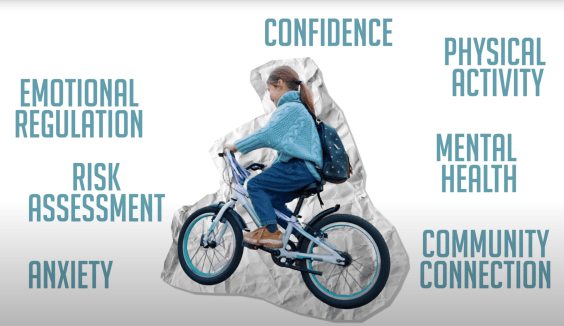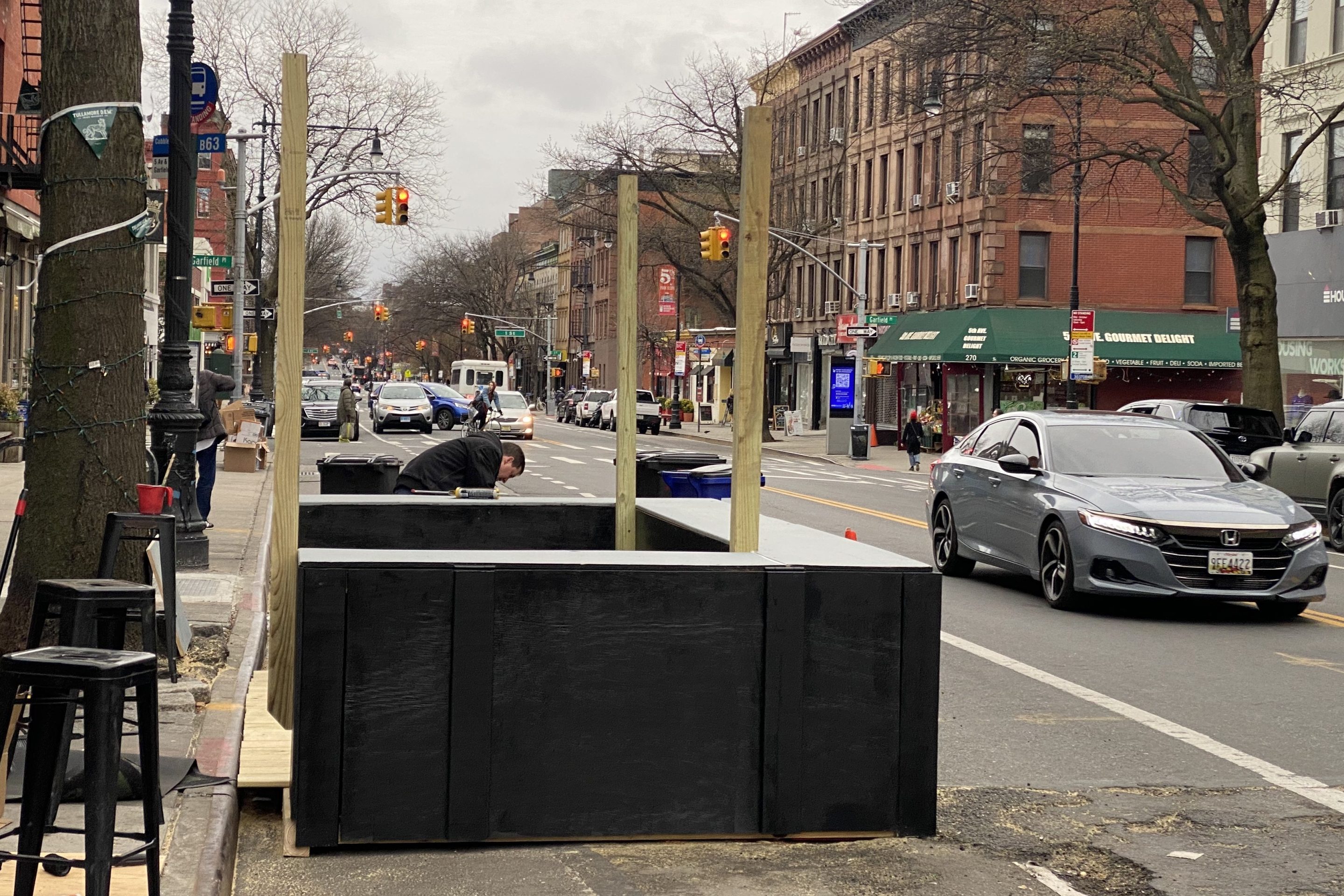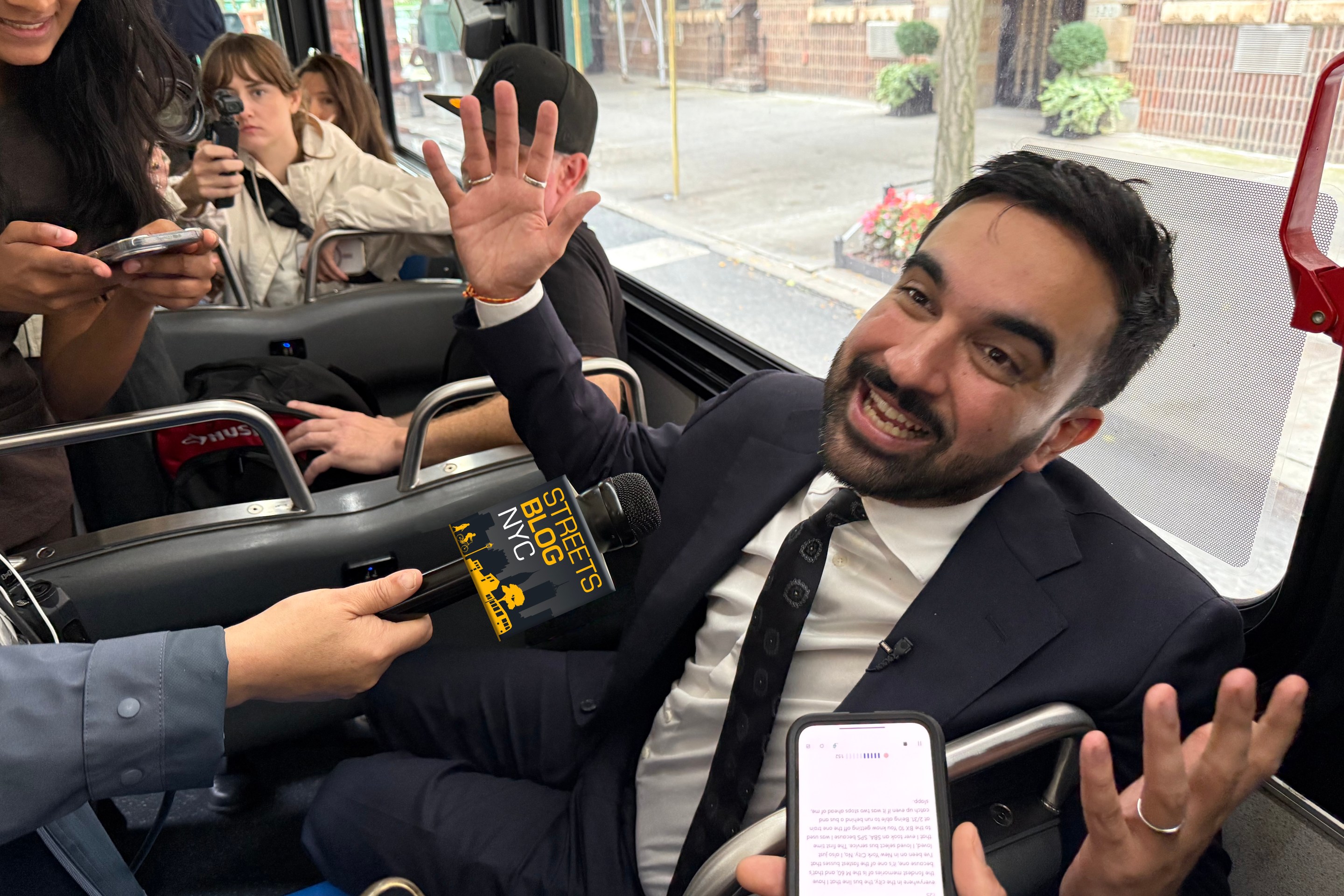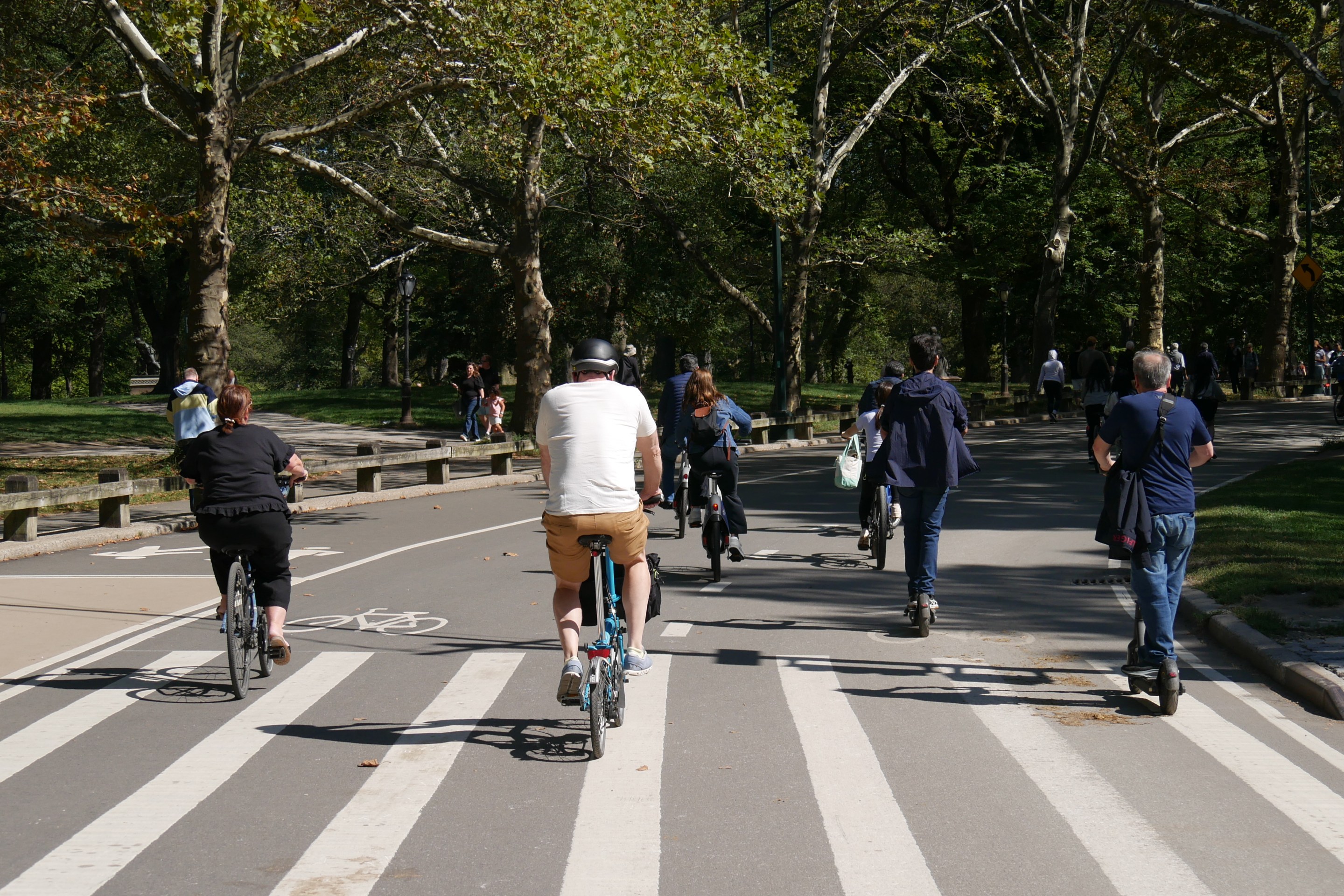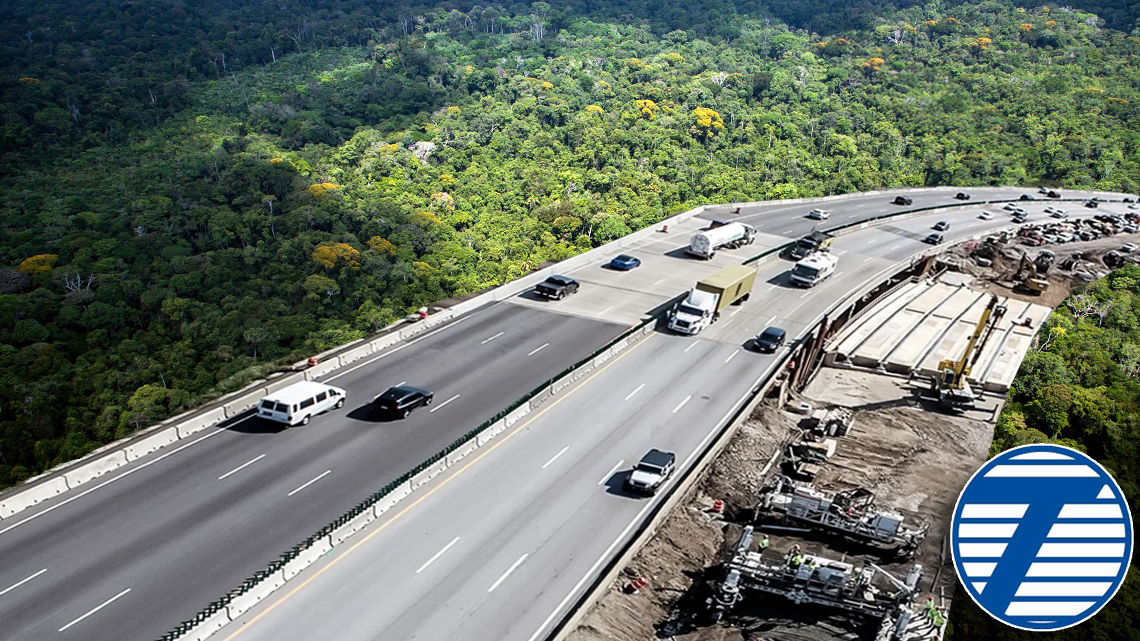Get stuff almost done.
The Queensboro Bridge finally has separate paths for cyclists and pedestrians — but the long-overdue upgrade still falls short of its full potential, because the city has failed to install proper markings, nearly five months after banishing cars from a shoulder path to make room for people on foot.
The Department of Transportation has set up signage at either ends of the Gatsbyesque span to point people onto the right of the two dedicated paths — pedestrians are now supposed to go on the former car lane on the south outer roadway, and bikes, e-bikes and micromobility riders go on the north outer roadway.
The markings on the former shared path are still the same, however, confusing people into taking the wrong side. And some of the entrances have few or no signs to make clear who should and who shouldn't use them.
It's the latest wrinkle after decades of waiting to get a safe crossing for anyone not driving over the 116-year-old bridge – which includes more than 8,500 daily cyclists – after the Adams administration delayed the de Blasio-era project for years.
Mayor Adams announced one of the most transformative transportation policies of his administration with little more than a minute-long video on social media in May, and the slow progress to get the changes over the line since signals a lack of interest in the project, advocates charged.
"It’s huge, it was fought for for 20 years, it took a lot of advocacy to get," said Emily Jacobi, the Manhattan organizer for Transportation Alternatives. "DOT really missed an opportunity to show that they care about the necessary safety features of this project and they lost an opportunity to create a real accessible amenity."
There are only weeks left before it gets too cold for DOT to change lane markings, Jacobi added, calling on the agency to study its brushwork.
"It’s not too late, they can make this right in the next couple of weeks," the advocate said.
Both paths were well used, even during the later morning, and now, even in its unfinished state, it is hard to grasp that the city ever forced pedestrians and cyclists in the same tight space.
"I do think it’s night and day from what we had," said Jason Froimowitz, who chairs the Transportation Committee of Manhattan Community Board 6. "By and large, we just need to give people time to realize it’s a separate path."
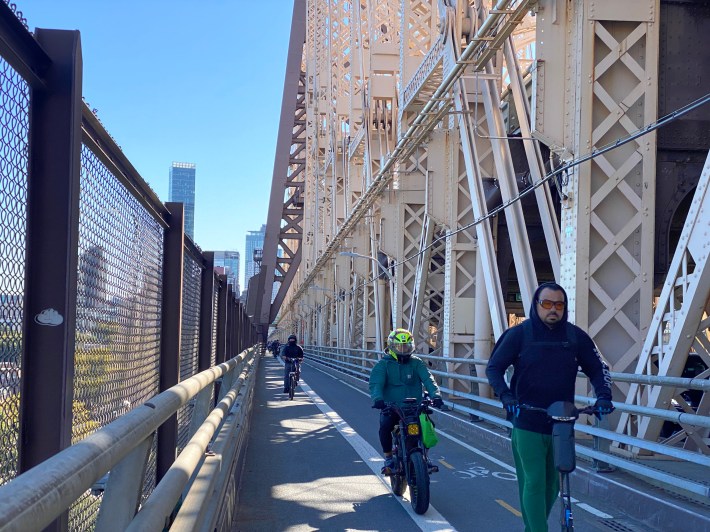
Streetsblog visited the bridge on Thursday to check on the latest state of affairs.
Signs, fences and old markings
At the Long Island City side, pedestrians and cyclists have to navigate around a sea of cars and trucks feeding in from Queens Boulevard and Northern Boulevard.
The south outer roadway's entrance now has a concrete pedestrian extension at Queens Plaza South. There were few signs in the area pointing toward this brand new piece of infrastructure.
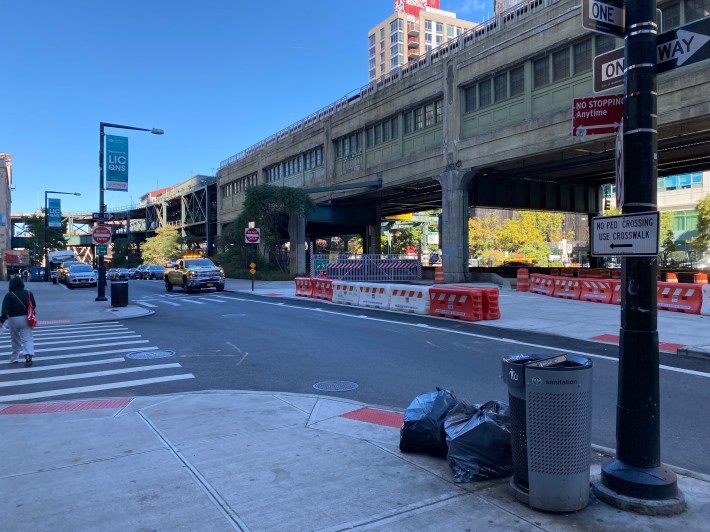
DOT also installed massive fences with bright red markings to make clear to drivers that they are no longer welcome on that path. This is good:

At the bike path on the north outer roadway, DOT installed signs on the bike path telling pedestrians to go to the other side.
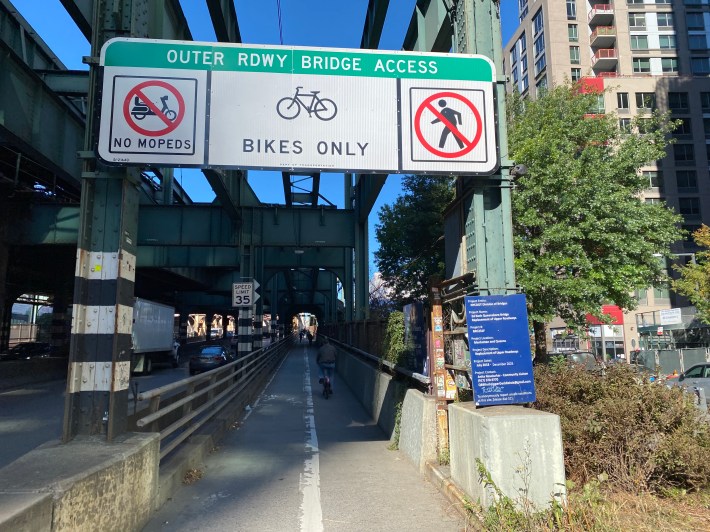
But the agency has yet to erase the now-outdated markings of the formerly shared path leading people to still walk on it.
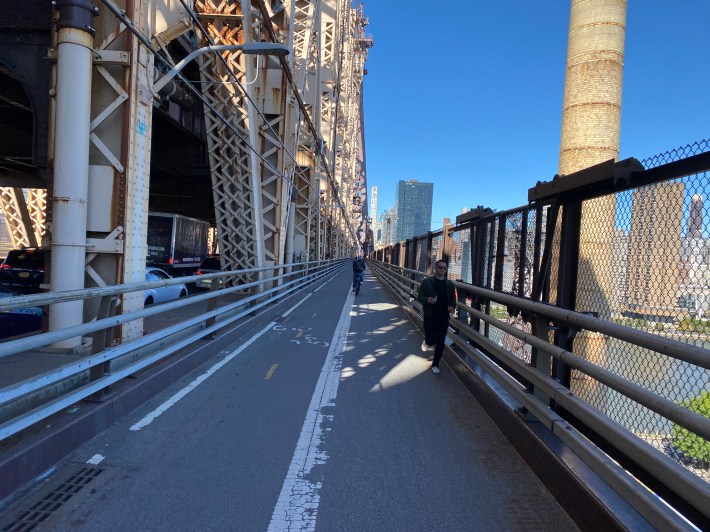
Some cyclists also don't take advantage of the full width because of the confusing markings.
The man in blue is biking on the wrong side of the two way bike lane. He doesn’t know this because @nyc-dot.bsky.social hasn’t changed the outdated markings on the ground, over three months after they moved all pedestrians to the other side of the Queensboro Bridge. Needlessly dangerous!
— Charlie Todd (@charlietodd.com) 2025-09-29T00:53:12.994Z
The agency's sluggish movement has prompted some to post their own signs at both paths, like this one on the Queens side.
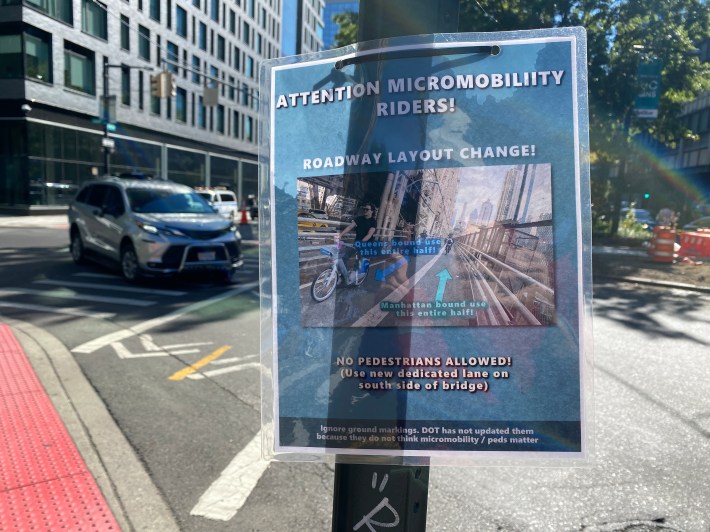
Or this more rudimentary posting on the Manhattan side of the pedestrian path.
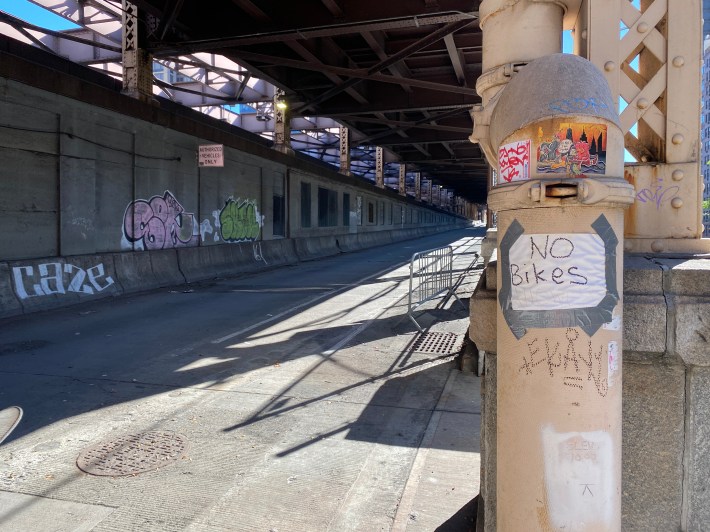
Midtown mess
Over in East Midtown, cyclists and pedestrians also have to find their way around busy First and Second avenues and 59th Street.
There were too few signs to make clear where people should walk or bike.
The bike lane's exit and entrance spits cyclist out via a hairpin turn, and there was no indication that pedestrians should not use this path.
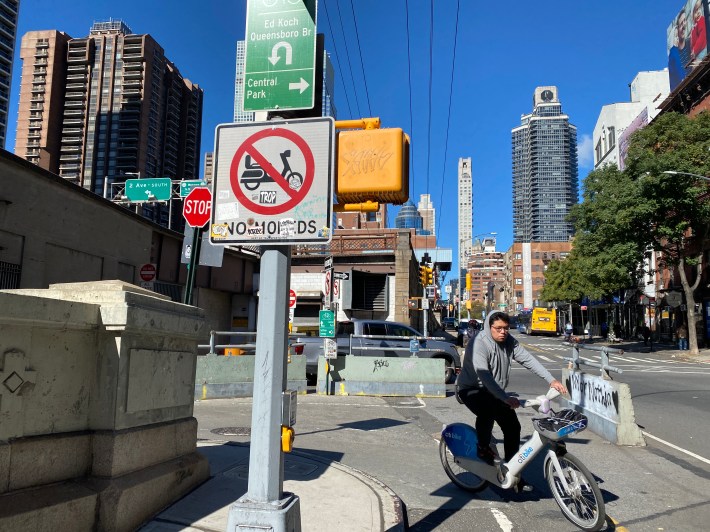
Down the block and around the corner, Streetsblog spotted two small signs pointing toward the south outer roadway, but those were very easy to miss.
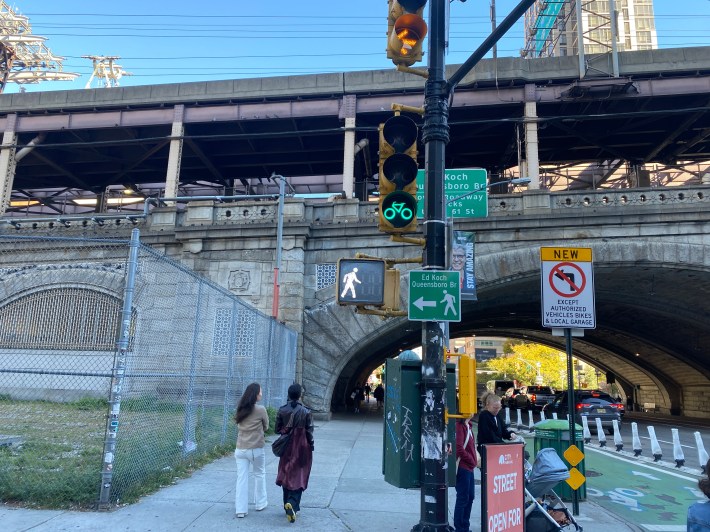
At the pedestrian path entrance, there was another one of those massive fences to keep motorists out of the new pedestrian path. This is good.
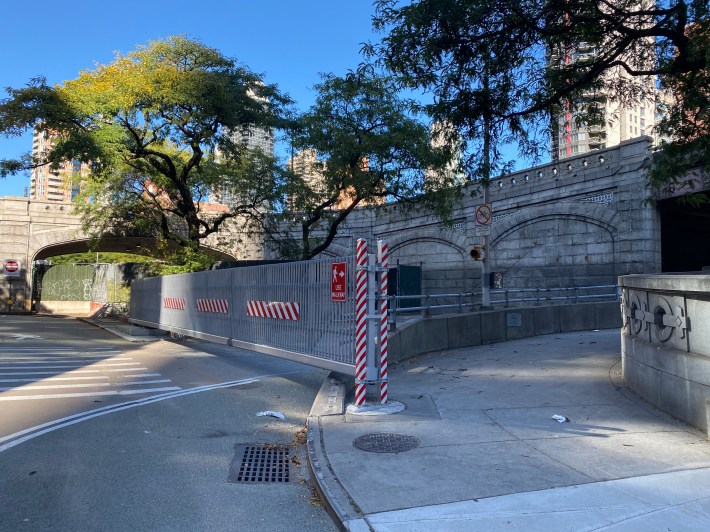
Advocates have been fighting for more car-free space on the bridge since at least the 1990s.
DOT leaders under former Mayor Bill de Blasio began hinting at the dedicated pedestrian path in 2017, before the then-Hizzoner committed to the change in 2021 with an opening set for 2022.
But de Blasio's and Adams's DOT kept pushing deadlines back as people kept crashing into each other on the sliver of space, with transportation leaders arguing that they needed to keep the extra shoulder lane open for cars amid an ongoing reconstruction of the upper deck, to avoid adding marginal wait times for motorists.
A spokesperson for DOT said that the markings were behind schedule because the agency tried to open the new space "as soon as possible." But the rep declined to give a timeline for finishing the work, saying only that the redesign was still "under implementation."
"We worked to open this new space as soon as possible because we knew how important this upgrade was for New Yorkers—and while bike and pedestrian signage is in place, work is ongoing to redesign the bridge approaches and mark the outer roadways to make access clearer," said Vin Barone.

